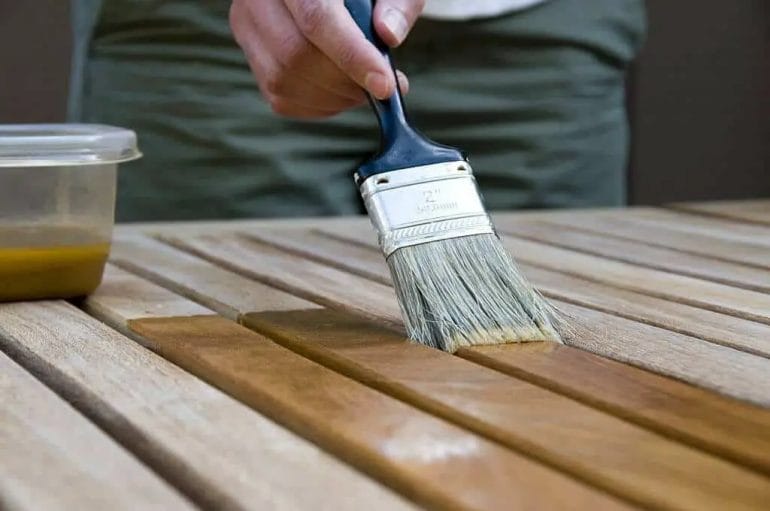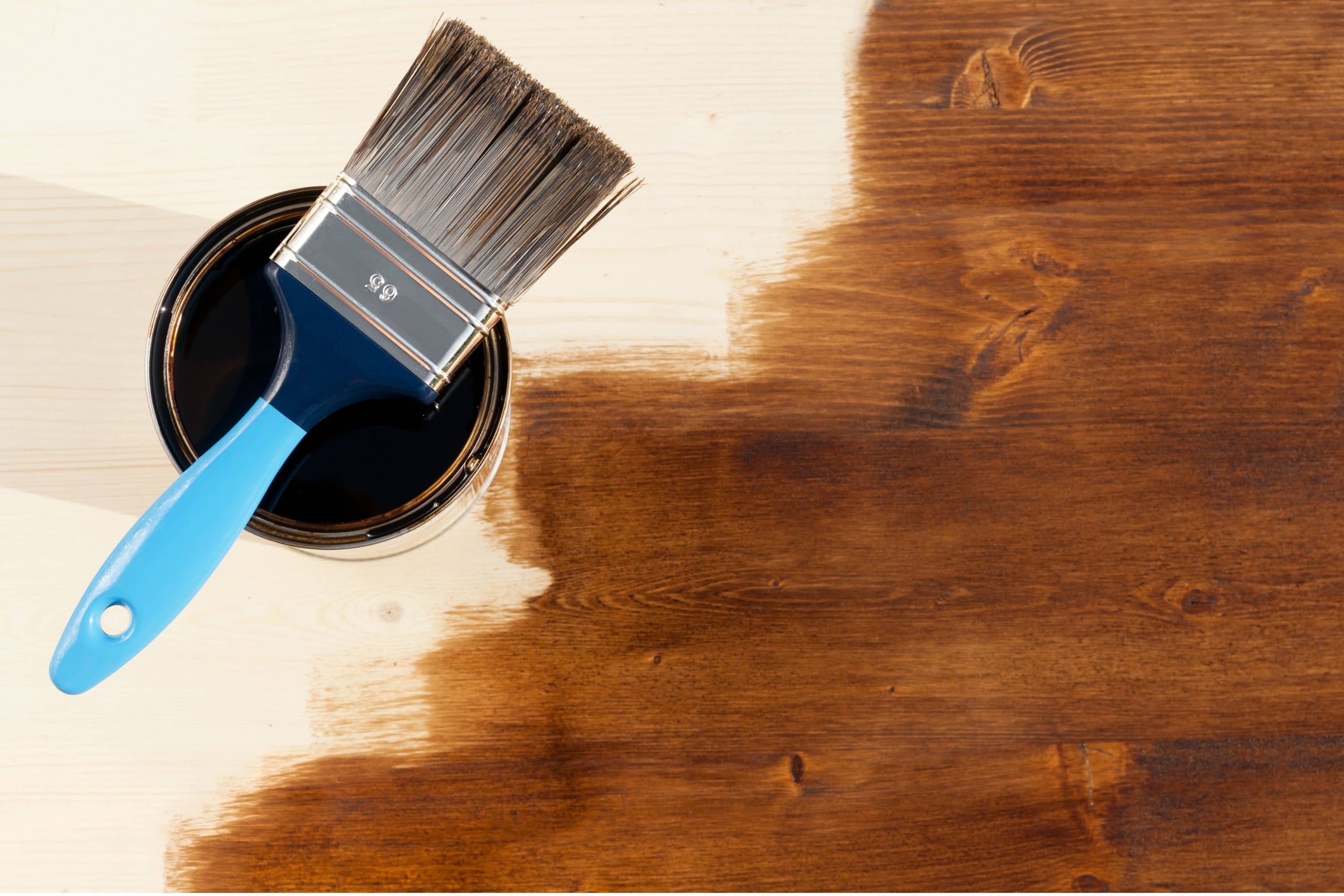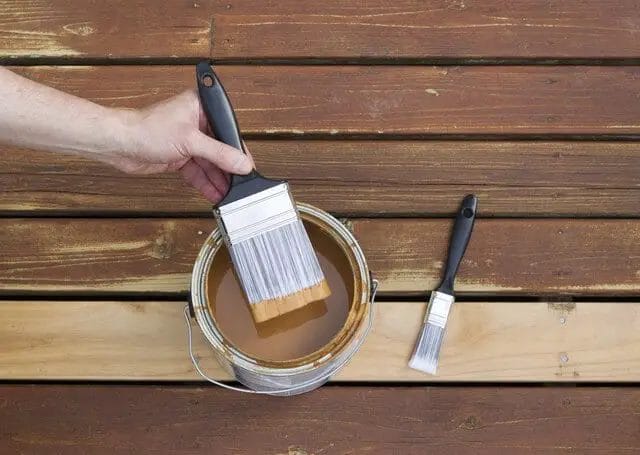Curious about how long the scent of wood stain lingers? The duration of the smell largely depends on various factors, including the type of stain, ventilation, and drying time. While some wood stains may dissipate within a few hours, others might continue to emit an odor for several days or even weeks. Understanding the factors that influence the duration of the smell can help you better manage and mitigate any potential discomfort. Read on to discover more about how long the smell of wood stain may last and how to minimize its impact.

Tips to Minimize and Speed up the Dissipation of Wood Stain Smell
Wood stain is a commonly used product that helps enhance the appearance of wood surfaces. However, one downside to using wood stain is the strong smell it can leave behind. The odor of wood stain can be unpleasant and linger in the air for an extended period of time. If you’re looking for ways to minimize and speed up the dissipation of wood stain smell, here are some helpful tips:

1. Ventilation
One of the most effective ways to reduce and eliminate wood stain smell is proper ventilation. Ensure that the area where you are staining the wood is well-ventilated by opening windows and doors. This will allow fresh air to circulate and carry away the odor.
2. Use Fans
Another way to expedite the dissipation of wood stain smell is by using fans. Position fans strategically around the room to create airflow and push the air out. This can help disperse the odor faster and improve the overall air quality.
3. Activated Charcoal
Activated charcoal is known for its ability to absorb odors. Place bowls of activated charcoal in the area where you stained the wood to help absorb the smell. Leave them overnight or for a few days until the odor dissipates.
4. Baking Soda
Baking soda is another excellent odor absorber. Sprinkle baking soda over the stained wood surface and let it sit for a few hours. Then, vacuum or wipe it away. The baking soda will help neutralize the smell and leave the area smelling fresh.
5. Vinegar
Vinegar is a natural deodorizer and can help eliminate the smell of wood stain. Mix equal parts of vinegar and water in a spray bottle and spritz the stained wood surface. Allow it to sit for a few minutes before wiping it clean. The vinegar will help neutralize the odor.
6. Coffee Grounds
Coffee grounds are not only great for brewing a cup of coffee but also absorb odors. Place bowls of coffee grounds near the stained wood to help minimize the smell. Replace the coffee grounds regularly until the odor dissipates.
7. Fresh Air and Sunlight
Take advantage of fresh air and sunlight to speed up the dissipation of wood stain smell. If possible, move the stained wood outdoors to a well-ventilated area. The fresh air and sunlight can help naturally eliminate the odor.
8. Odor Neutralizing Products
There are various odor neutralizing products available in the market that can help eliminate the smell of wood stain. Look for products specifically designed to combat strong odors and follow the instructions for best results.
9. Patience
Lastly, it’s important to exercise patience when trying to minimize and speed up the dissipation of wood stain smell. The odor will gradually fade away over time, so allow sufficient time for it to dissipate completely.
In summary, wood stain smell can be minimized and sped up by ensuring proper ventilation, using fans, utilizing activated charcoal, baking soda, vinegar, and coffee grounds as odor absorbers, taking advantage of fresh air and sunlight, using odor neutralizing products, and practicing patience. By following these tips, you can enjoy beautifully stained wood surfaces without the lingering smell.

Factors Influencing the Length of Wood Stain Odor
Wood stain is a popular choice for enhancing the beauty of wooden surfaces. However, one common concern associated with wood stain is its odor. The smell of wood stain can be strong and unpleasant, lingering for days or even weeks after the application. The length of time that the odor persists can vary based on several factors. In this section, we will explore these factors and how they influence the duration of wood stain odor.
Type of Wood Stain
The type of wood stain used plays a significant role in determining the duration of the odor. There are two main types of wood stain: oil-based and water-based. Oil-based stains tend to have a stronger smell that can last longer compared to water-based stains. This is because oil-based stains contain solvents that evaporate at a slower rate, resulting in a more prolonged odor presence. On the other hand, water-based stains have a milder odor that dissipates relatively quickly.
Ventilation and Airflow
The ventilation and airflow in the area where the wood stain is applied also impact the length of the odor. Proper ventilation helps in dissipating the odor molecules and expediting the evaporation process. If the stained area has poor ventilation and limited airflow, the odor molecules may get trapped, prolonging the duration of the smell. Opening windows, using fans, and ensuring sufficient air circulation can help reduce the odor lingering time.
Humidity and Temperature
The humidity and temperature of the environment can affect the drying and evaporation process of wood stain, thus influencing the duration of the odor. Higher humidity levels slow down the evaporation rate, increasing the time it takes for the odor to fade away. Similarly, lower temperatures can lengthen the drying time, prolonging the presence of the odor. It is recommended to apply wood stain in moderate humidity and temperature conditions to minimize the odor’s persistence.
Application Method
The method used to apply the wood stain can impact the odor’s duration as well. If the stain is applied in thin, even coats, it tends to dry faster, resulting in a shorter odor presence. However, if the stain is applied excessively or in thick layers, it takes longer to dry, prolonging the odor. It is essential to follow the manufacturer’s instructions regarding the application method to optimize drying time and minimize odor.
Wood Type and Condition
The type and condition of the wood being stained can also affect the duration of the odor. Different wood species have varying levels of porosity, which can impact the absorption and release of the stain’s volatile compounds. Additionally, if the wood is not properly prepared before staining, such as having residual finishes or contaminants, it can interfere with the stain’s drying process and prolong the odor. It is important to ensure the wood is clean and free from any previous finishes for optimal stain absorption and faster drying.
In summary, the length of wood stain odor can be influenced by various factors. The type of stain, ventilation, humidity, temperature, application method, and wood type all play a role in determining how long the odor persists. By considering these factors and taking appropriate measures, such as using water-based stains, ensuring proper ventilation, controlling humidity and temperature, applying thin coats, and preparing the wood adequately, it is possible to minimize the duration of wood stain odor.

Natural Remedies to Eliminate or Reduce Wood Stain Smell
If you have recently stained a piece of wood furniture or completed a woodworking project, you may be dealing with an unpleasant odor lingering in the air. The strong smell of wood stain can be difficult to get rid of, but there are several natural remedies you can try to eliminate or reduce the odor. In this section, we will explore some effective methods to help you neutralize the wood stain smell and create a more pleasant environment.
Ventilation
One of the simplest and most effective ways to address the wood stain smell is to improve ventilation in the area. Open windows and doors to allow fresh air to circulate and carry away the odor. You can also use fans or air purifiers to help speed up the process. By increasing airflow, you can significantly reduce the concentration of the smell and freshen up the space.
Baking Soda
Baking soda is a versatile household ingredient known for its odor-absorbing properties. To use baking soda to eliminate wood stain smell, sprinkle a generous amount over the stained surface or place an open container filled with baking soda nearby. Leave it overnight to absorb the odor, then vacuum or sweep away the powder. Repeat this process if necessary until the smell is gone.
Vinegar
Vinegar is another effective natural remedy for neutralizing odors, including wood stain smell. Mix equal parts vinegar and water in a spray bottle and spray the solution over the stained area. Allow it to sit for a few minutes, then wipe it clean with a damp cloth. The acidic properties of vinegar help to break down the odor-causing molecules and eliminate the smell. Just make sure to test the solution on a small, inconspicuous area of the wood before applying it to the whole surface.
Coffee Grounds
Coffee grounds are not only great for brewing your morning cup of joe but also for absorbing unpleasant odors. Place a bowl or container filled with fresh coffee grounds near the wood stain to help absorb the smell. The coffee grounds will act as a natural deodorizer and gradually eliminate the odor over time. Replace the coffee grounds with fresh ones every few days until the smell dissipates.
Citrus Fruits
Citrus fruits, such as lemons or oranges, have a refreshing scent that can help mask and neutralize the wood stain smell. Cut a few citrus fruits in half and place them around the stained area. Alternatively, you can squeeze the juice and mix it with water to create a natural air freshener spray. The citrus aroma will help to counteract the odor and leave a pleasant scent in the air.
Activated Charcoal
Activated charcoal is a highly absorbent substance that can effectively trap and eliminate odors. Place a few pieces of activated charcoal in a bowl or wrap them in a porous cloth and position it near the wood stain. The charcoal will absorb the odor molecules, helping to reduce the smell. Leave it in place for a few days or until the odor is gone.
Onion and Water Mixture
While it may sound unusual, an onion and water mixture can be surprisingly effective in reducing wood stain smell. Chop an onion into small pieces and place them in a bowl of water. Leave the bowl near the stained wood and let it sit overnight. The onion will help absorb the odor, leaving the air smelling fresher. Just remember to dispose of the onion and water mixture afterward.
In summary, dealing with a lingering wood stain smell can be unpleasant, but there are several natural remedies that can help you eliminate or reduce the odor. By improving ventilation, using baking soda, vinegar, coffee grounds, citrus fruits, activated charcoal, or an onion and water mixture, you can effectively neutralize the smell and create a more pleasant environment. Try these natural remedies and enjoy the beauty of your stained wood without the accompanying strong odor.
Choosing Low-Odor Wood Stain Options for Minimal Smell
When it comes to staining wood, one of the concerns that many people have is the strong, lingering smell that traditional wood stains can produce. However, advancements in technology have led to the development of low-odor wood stain options that offer a more pleasant staining experience. In this section, we will explore the benefits of using low-odor wood stain and provide some tips for choosing the best option for your project.
1. What is Low-Odor Wood Stain?
Low-odor wood stain is a type of wood stain that has been specially formulated to emit minimal smells during application and drying. Traditional wood stains contain volatile organic compounds (VOCs) that can release strong fumes and odors, which can be unpleasant and even harmful to health. Low-odor wood stains are designed to minimize these odors without compromising on performance or quality.
2. Benefits of Low-Odor Wood Stain
Using low-odor wood stain offers several advantages over traditional options:
- Improved Indoor Air Quality: Low-odor wood stains emit fewer VOCs, resulting in cleaner indoor air and a healthier environment.
- Reduced Smell: The minimal smell of low-odor wood stain makes it ideal for indoor projects, where strong odors can be disruptive.
- Easier Application: Low-odor wood stains are often formulated with a smoother consistency, making them easier to apply and spread evenly on the wood surface.
- Quick Drying Time: Many low-odor wood stains have a shorter drying time compared to traditional stains, allowing you to complete your project more efficiently.
3. Factors to Consider When Choosing Low-Odor Wood Stain
When selecting a low-odor wood stain, there are a few factors that you should take into consideration:
- Type of Wood: Different wood types can react differently to stains. Some woods may absorb stain more readily, while others may require additional coats. Research the compatibility of the stain with the type of wood you plan to use.
- Color Options: Low-odor wood stains are available in a variety of colors. Consider the desired color outcome and choose a stain that offers the shade you envision for your project.
- Transparency: Low-odor wood stains come in different levels of transparency, ranging from transparent to opaque. Decide whether you want the natural grain to show through or prefer a more solid color.
- Finishing Options: Determine if you need a specific type of finish, such as matte or glossy. Low-odor wood stains offer various finish options to suit different aesthetic preferences.
4. Application and Safety Tips
When using low-odor wood stain, it is important to follow these application and safety tips:
- Ventilation: Even though low-odor wood stains emit minimal odors, it is still important to work in a well-ventilated area to ensure proper air circulation.
- Protective Gear: Wear appropriate protective gear, such as gloves, goggles, and a respirator mask, to shield yourself from any potential harm.
- Read Instructions: Carefully read and follow the instructions provided by the manufacturer to ensure the best results and avoid any safety hazards.
- Testing: Before applying the stain to your entire project, test it on a small, inconspicuous area to ensure that you are satisfied with the color and finish.
In summary, low-odor wood stain options provide a convenient and safer alternative to traditional wood stains. By choosing a low-odor option, you can enjoy a more pleasant staining experience while still achieving beautiful and long-lasting results for your woodworking projects.
How long does wood stain smell last?
The duration of the wood stain smell can vary depending on several factors such as the type of stain, ventilation, and drying time. Generally, the smell can last anywhere from a few days to several weeks. Adequate ventilation and allowing the stain to fully dry can help in reducing the smell more quickly.
Conclusion:
In conclusion, the duration of a wood stain smell can vary depending on factors such as the type of stain used, ventilation in the area, and the size of the project. On average, the smell of wood stain can linger for several days to a couple of weeks. However, proper ventilation and airing out the space can help accelerate the dissipation of the odor. It is important to note that using low VOC (volatile organic compounds) or water-based stains can significantly reduce the duration of the smell. Additionally, keeping windows open, using fans, and allowing fresh air to circulate can help minimize the impact of the odor.
Overall, if you are concerned about the duration of the wood stain smell, it is advisable to plan your project in a well-ventilated area and consider using stains with low VOC content. By taking these steps, you can enjoy the beauty of stained wood while minimizing the inconvenience caused by the lingering smell.